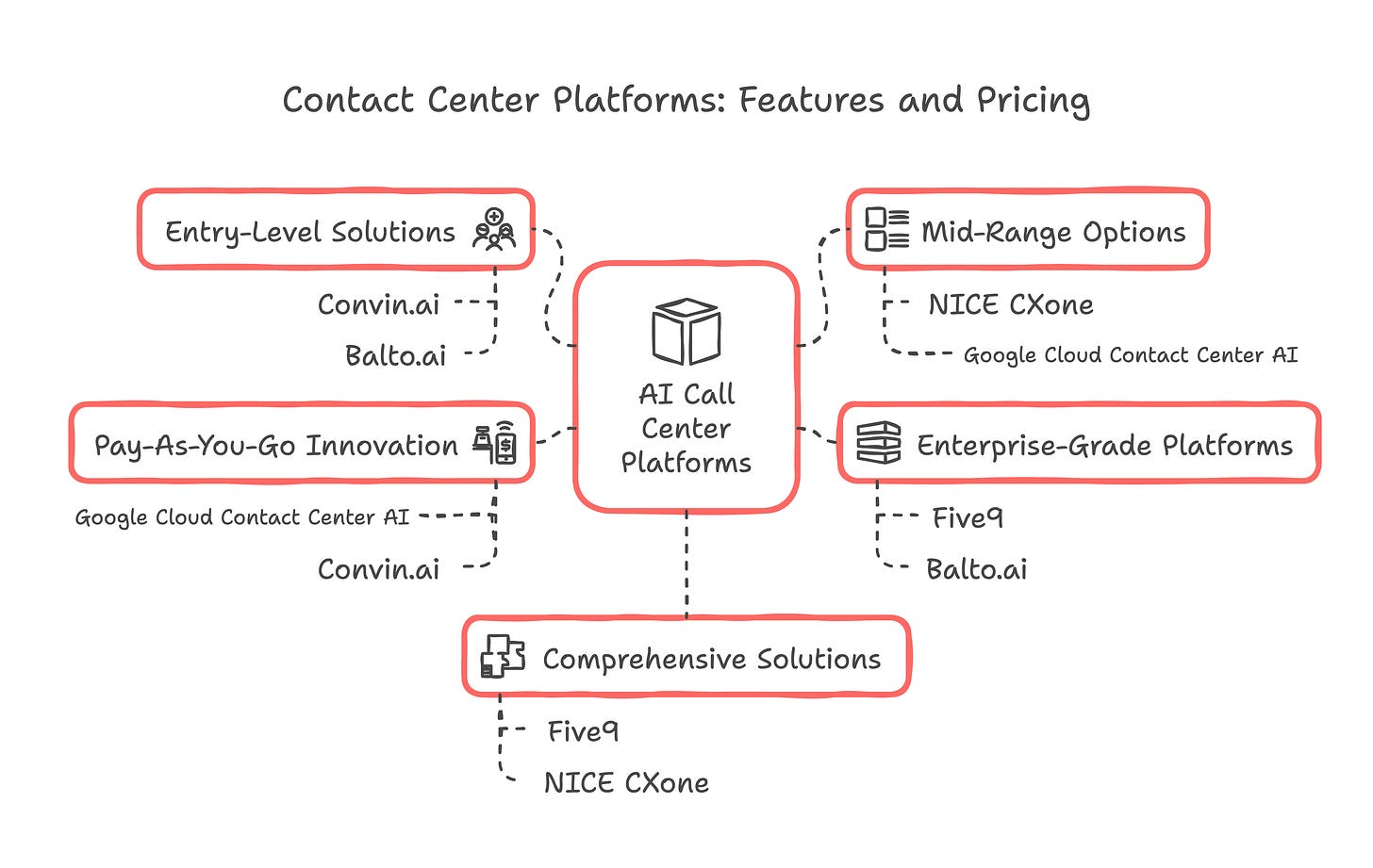Hey there, AI Adopters!
"We have thousands of recorded sales calls and scripts. Can AI help us understand what works and generate better scripts that actually convert?"
This question 👆 from one of my premium subscribers perfectly captures a challenge I'm hearing more and more: how to transform that goldmine of call center data into actual sales results. You know that one script your team's been using since 2019 – the one that makes your agents sound like they're reading IKEA furniture instructions? Today, I'm showing you exactly how to use AI to analyze your existing call recordings, QA data, and scripts to generate sales conversations that actually convert.
This isn't about robots replacing your team – it's about using AI to clone your top performers' winning moments across every call. Let's dive in.
What AI Sees That We Miss
Remember when you last listened to a "perfect" sales call and thought, "If only we could clone this conversation"? Well, that’s exactly what AI is doing now, just more systematically and at scale. By analyzing thousands of call recordings, AI tools can identify patterns that our human brains might miss – like the fact that saying "investment" instead of "cost" in the first 30 seconds might increase your conversion rate by 12%.
Here’s what’s fascinating: According to my research, most call centers are sitting on a goldmine of data without realizing it. Your call recordings, QA sheets, and existing scripts aren’t just compliance requirements – they’re the building blocks for AI-driven optimization.
The Science Behind Better Scripts
The magic happens when AI analyzes successful vs. unsuccessful calls. It’s not just about what words are used – it’s about the entire conversation flow. Modern AI platforms can identify:
Sentiment shifts during calls (when did the customer go from frustrated to interested?)
Key moments that led to successful conversions
Patterns in objection handling that actually worked
Common points where deals are lost
But here’s what makes this really powerful: AI doesn’t just tell you what worked – it helps create dynamic scripts that adapt in real-time based on customer responses.
The Implementation Blueprint
Based on extensive analysis and real-world implementations, here’s how to approach this transformation:
First Phase: Data Preparation
Start by digitizing and organizing your existing call data. This means getting your recordings, scripts, and QA data into a format that AI can analyze. Modern platforms like Convin.ai or NICE CXone can help automate this process.
Second Phase: Analysis & Insights
This is where AI really shines. It will analyze your data to identify:
High-converting conversation patterns
Optimal response flows for different customer types
Effective objection-handling techniques that are already working in your team
Third Phase: Script Enhancement
Using these insights, you can create dynamic scripts that:
Adapt to customer responses in real-time
Provide agents with proven objection handlers
Suggest optimal next steps based on the conversation flow
Real World Impact
Let me share something concrete: A recent implementation with a financial services provider showed a 17.2% increase in first-call resolution after implementing AI-optimized scripts. The key wasn’t just better scripts – it was better understanding of when to use different approaches.
The Technology Stack
Based on my analysis, several platforms stand out for different needs:
Convin.ai shines in automated quality management, analyzing 100% of customer interactions to identify what works. It’s particularly strong for teams looking to start with AI script optimization.
Balto.ai offers dynamic scripting that adapts in real-time, making it excellent for complex sales environments where flexibility is crucial.
NICE CXone provides comprehensive features including intelligent scripting and performance management, ideal for larger operations needing enterprise-grade solutions.
The Price of Progress: 2025 Platform Comparison
Let’s talk about the elephant in the room – cost. I know budget discussions can make even the most enthusiastic AI champion nervous, so I’ve broken down the latest pricing to help you navigate these waters.
Entry-Level Solutions
If you’re just starting your AI journey, Convin.ai offers the gentlest entry at $50/month per agent, with a free trial to test the waters. It’s like getting the keys to a Tesla Model 3 when you’re used to driving a Civic – powerful enough to impress but won’t break the bank.
Mid-Range Options
Balto.ai starts at $100/month and, while they don’t offer a free trial, their optional setup fee structure means you can customize your initial investment. Think of it as buying a car with exactly the features you need, no more, no less.
Enterprise-Grade Platforms
NICE CXone offers a fascinating tiered approach:
Digital Agent starts at $71/user/month
Voice Agent at $94/user/month
Omnichannel Agent at $110/user/month
And their Ultimate Suite tops out at $249/user/month.
It’s like choosing between different Tesla models – each tier adds more horsepower to your operation.
Pay-As-You-Go Innovation
Google Cloud Contact Center AI takes a different approach with usage-based pricing:
$0.007 per virtual agent request
$0.024 per minute for speech-to-text
$0.06 per chat session for Agent Assist
Perfect for those who want to pay for exactly what they use, no more, no less.
Comprehensive Solutions
Five9 rounds out the options with plans ranging from $175 to $325 monthly, with their digital and core plans starting at the lower end. Think of it as an all-inclusive resort package – everything you need in one predictable payment.
The Bottom Line
Remember, these prices are just the cover charge. The real value comes from:
Implementation support (some include it, others charge extra)
Training packages (especially crucial for complex systems)
Contract flexibility (longer commitments often mean better rates)
Support levels (because 3 AM emergencies happen)
Add-on features (those nice-to-haves that become must-haves)
The key isn’t finding the cheapest option – it’s finding the one that’ll generate the best ROI for your specific situation. Just like any good investment, the initial price tag is only part of the story.
Making It Work
Here’s what separates successful implementations from failures:
Start Small: Begin with a pilot group to test and refine your approach. This allows you to demonstrate ROI before scaling.
Focus on Integration: Ensure your chosen solution works seamlessly with your existing CRM and call center infrastructure.
Maintain Human Oversight: Use AI as a guide, not a replacement for human judgment. Your best agents’ insights should inform how you implement AI suggestions.
Next Steps
Ready to transform your call scripts? Start by:
Auditing your current call data and recording systems
Identifying your key conversion metrics
Selecting a platform that matches your scale and needs
Remember, the goal isn’t to create robotic conversations – it’s to empower your agents with insights that make every call more effective.
Adapt & Create,
Kamil
P.S. Want to dive deeper? Premium subscribers can access our detailed platform comparison guide and ROI calculator in the resource center.
References and Further Reading
Primary Sources
Top 10 Companies Using Generative AI to Enhance Customer Service - Convin
The Impact of AI and Machine Learning on Call Center Operations
How Call Center AI Powers Your Contact Center & Its Benefits
Impact of AI on Call Centers: 7 Key Impacts in 2025 - Invensis
Platform Documentation
Case Studies and Implementation Guides
Call Center Scripting Software: AI for Dynamic Customer Service - Balto
Transforming Customer Service with Google Contact Center AI (CCAI)
20 Best Call Center Scripting Software Of 2025 - The CX Lead
Note: All links and resources are current as of January 2025. Access to some resources may require subscription or registration.















